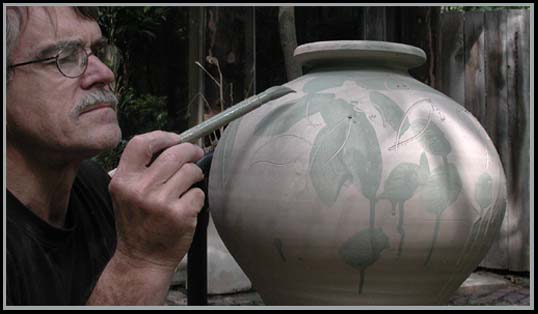State of the Art Room

Whether it’s from supplies on a traveling cart or in a designated art room, art teachers must be ready for anything, according to Marvin Bartel — artist, former teacher and art facility consultant.
Bartel, who earned his master’s and doctor’s degrees in art education from the University of Kansas, has spent time as both a high school teacher and university professor teaching art education, ceramics, photography, drafting and architectural design.
“Art curriculum is a varied thing because teachers are probably more autonomous in the visual arts than they are in most other curriculum areas,” he said. “There may be a little variation among states but generally speaking while there will be curriculum standards — national standards and state standards — in general no one really monitors that for art teachers.”
Arts curriculum can vary from the use of audio and visual aids to painting, drawing or sculpting, among others, he said.
Some teachers employ a choice-based curriculum where students are trained to choose their own assignment either individually or collaboratively.
The majority of teachers, however, typically assign projects that are based on a particular art material and have all students work through a similar project, he said.
“Good teachers will account for individual variability,” Bartel said. “You need a facility that’s basically an art studio for a lot of people to work in at one time.”
Furnishing
With easels for painting, drawing horses for drawing and flat surfaces required for collages, the varying curriculum in art leads to the question of how to furnish a classroom.
From his experience as an art teacher and a consultant, Bartel said teachers have come to him with such dilemmas as how high a worktable should be, given that it needs to meet the needs of kindergarten through fifth or sixth grade.
“You can understand that that’s not an easy question to respond to because you’ve got kids who are different heights working in the same room in the course of a day, and they don’t make tables that move up and down easily and quickly,” he said. “So the choice is to raise the little kids up on taller schools and hope they’re not so fidgety that they fall off, or lower the tables so everyone can use them.”
The height issue also come into play with sinks. While the standard height for sink counters is 36 inches, they require younger students to climb up onto stepstools, limiting the number of students who can wash up at one time.
For both work counters and sinks, Bartel recommends inconveniencing taller students slightly by lowering the heights for safety and efficiency.
In addition to size, sinks are also better placed in a peninsula rather than the corners they are typically situated in to facilitate smoother classroom operations.
Lighting
Bartel said the kind of lighting required for an art room is not necessarily the same as in a regular classroom due to art concepts like indentation and shadowing.
Within a visual arts room, creating both two and three-dimensional work requires different types of lighting.
“There are times when I want to have people doing a drawing and be able to see the toning variation that lighting creates,” he said. “If you set an egg on your desk and try to see the tonal difference between the top and bottom of the egg, it makes a big difference in what sort of lighting your classroom has.”
Additionally, if an art teacher wants to project images, Bartel recommended the projecting images on the same wall as windows to allow light into the room without having it shine on the screen and diminishing its contrast.
“You can turn out all the room lights but there’s always going to be some ambient light
unless you have good blinds on the windows, and most teachers don’t like to have the room totally dark because it’s not good for classroom management,” he said. “Architects don’t seem to think of any of that when they design these facilities, it comes from an experience of working in the classroom for a lifetime and what I’ve had to do in order to make things work in typical classrooms.”
Future
Bartel said that today, in contrast to past decades, computers are used increasingly for art curriculum.
Rather than using posters, slides or field trips, teachers often rely on using the internet to showcase work and to have students write statements or create powerpoints about their creative process. Students can also create portfolios of their work for teachers to see their accomplishments over time, or use photoediting software for their projects.
Looking ahead, Bartel said he was concerned about schools losing art teachers and art departments due to budget cuts.
He remains hopeful, he said, that resources might be used more effectively, including a flipped approach of having students learn content via online videos, similar to the popular Khan Academy program, and be coached on creativity when they come in to class.
A flipped approach could economize arts programs to an extent, but also teach art more effectively, he said.
“At a time when the economy is suffering is a time when you need creativity more than ever in order to be competitive economically,” he said. “And the success of students once they get through school is based on a combination of knowing something, as well as having a strong imagination with what to do what they know.”
